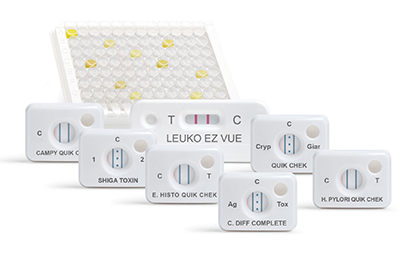Enteric Disease
Enteric diseases are intestinal illness caused by micro-organismssuch as viruses, bacteria and parasites. These diseases are most frequently acquired through contaminated food and water. Although enteric micro-organisms typically enter the body through the mouth, some can spread from person to person. Every year, millions of cases of foodborne illness occur in the United States, and the illness burden is even higher in developing countries. Much of this burden could be prevented with better science and prevention tools.
Intestinal Inflammation
Inflammatory bowel disease (IBD)
One cause of inflammation is inflammatory bowel disease (IBD). IBD gets worse over time, and its severe symptoms affect the quality of life of people with the disease. The two most common inflammatory bowel diseases are ulcerative colitis and Crohn’s disease.
Clostridium difficile infection (CDI)
A C. difficile infection can also cause intestinal inflammation. C. difficile is an infection that most commonly occurs in hospitals and other healthcare settings, like nursing homes. It spreads rapidly, and symptoms include watery diarrhea, fever, appetite loss, and abdominal pain and inflammation.
Lactoferrin Testing
Lactoferrin is present in the stools of people with intestinal inflammation due to IBD and C. difficile infection. Lactoferrin testing can quickly identify likely IBD patients for further testing and non-invasively assess inflammation levels for patients already diagnosed with IBD.
Intestinal Inflammation
TECHLAB manufactures several diagnostics that detect lactoferrin and other markers of inflammation in the bowels
C. difficile
C. difficile infection usually occurrs when the normal microflora of the intestinal tract is altered or killed by antibiotics. Once C. difficile growth begins, toxins A and B are produced, causing diarrhea and colitis.
Toxigenic strains of C. difficile carry the genes encoding the toxins. The disease results from the toxins that the organism produces. C. difficile produces two main toxins, toxin A and toxin B. Toxin A is a weakly cytotoxic enterotoxin. C. difficile also produces toxin B, which is a cytotoxin. Toxin B can be detected by the tissue culture assay. Toxigenic C. difficile strains produce both toxins or only toxin B. The disease can be treated with antibiotics, but relapses are common.
Clostridium difficile
TECHLAB produces a panel of in vitro diagnostics for detecting C. difficile and its toxins in fecal specimens from patients suspected of having the disease.
Approximately half the global population is infected with H. pylori. Most have no symptoms, and do not require treatment. However, a minority of these people develop gastritis, and a small fraction develop gastric ulcers or gastric cancer. The standard procedure to diagnose H. pylori involves endoscopy with biopsy. Current guidelines still recommend this for patients with alarm symptoms such as GI bleeding or sudden weight loss, or for patients over 55. However, younger patients who do not have alarm symptoms may benefit from non-invasive tests, such as a fecal antigen test. These tests can also verify that H. pylori infection has been eradicated after treatment.
Helicobacter pylori
TECHLAB manufactures diagnostic assays for detecting H. pylori in fecal specimens


